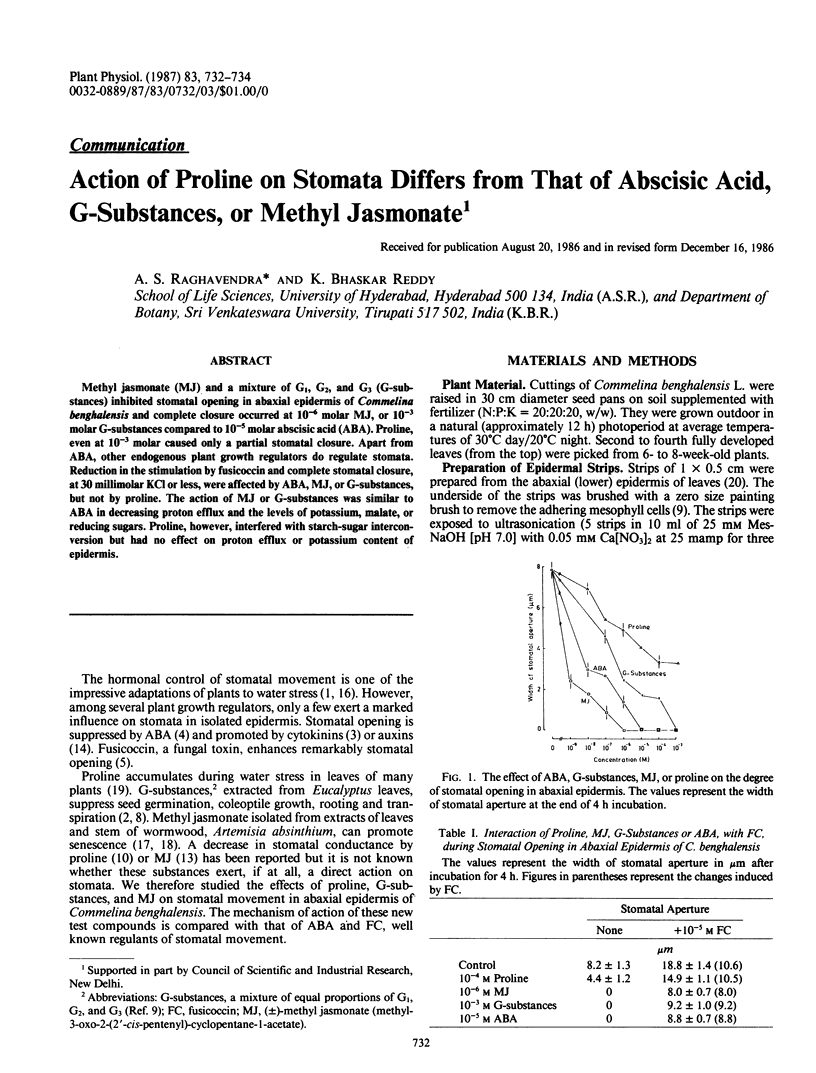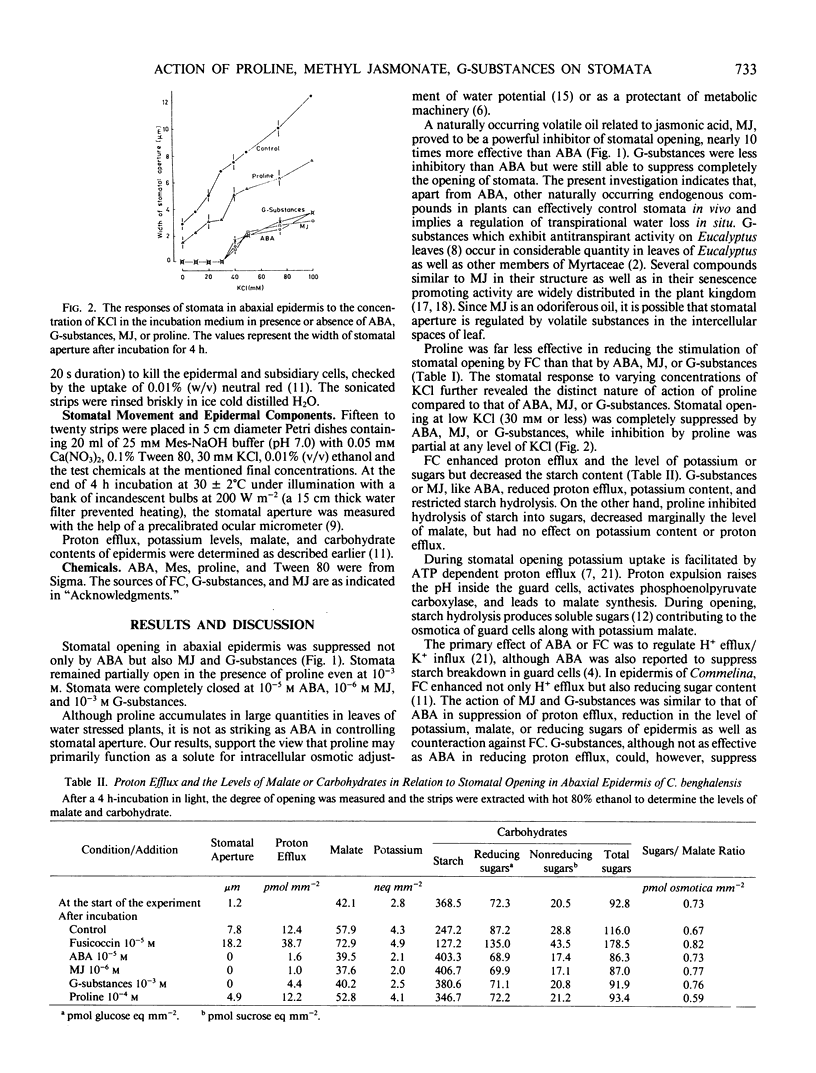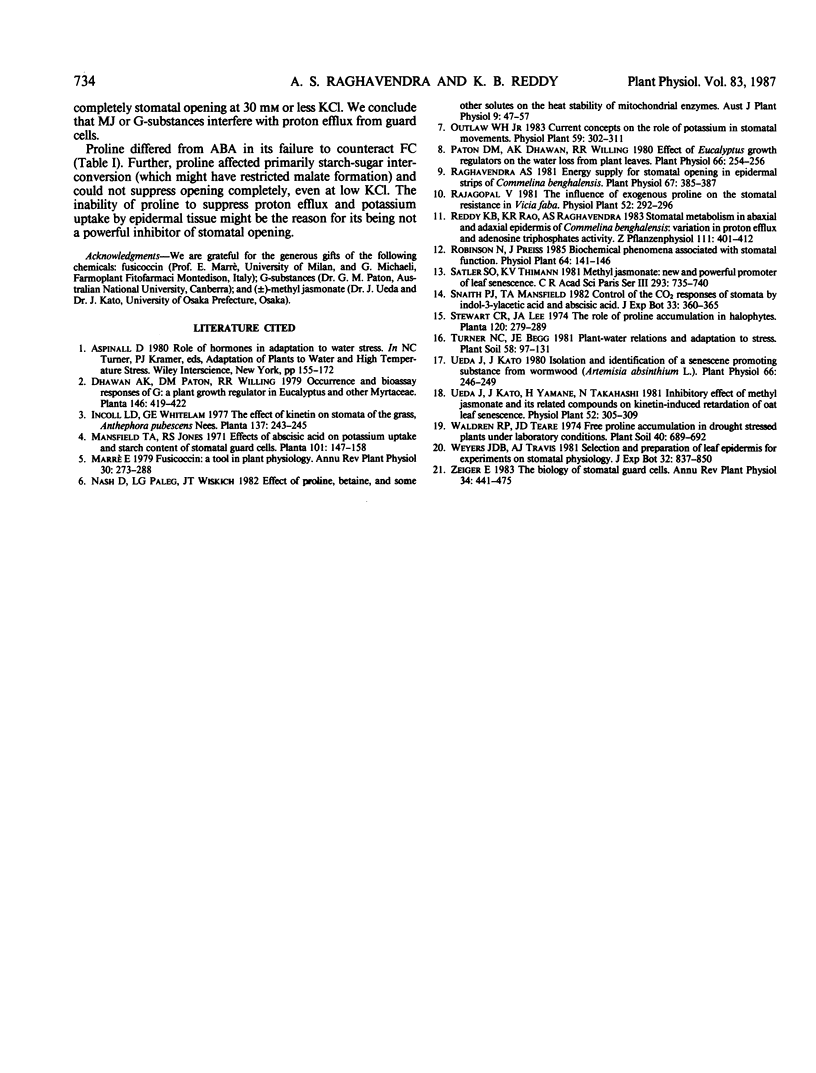Abstract
Methyl jasmonate (MJ) and a mixture of G1, G2, and G3 (G-substances) inhibited stomatal opening in abaxial epidermis of Commelina benghalensis and complete closure occurred at 10−6 molar MJ, or 10−3 molar G-substances compared to 10−5 molar abscisic acid (ABA). Proline, even at 10−3 molar caused only a partial stomatal closure. Apart from ABA, other endogenous plant growth regulators do regulate stomata. Reduction in the stimulation by fusicoccin and complete stomatal closure, at 30 millimolar KCl or less, were affected by ABA, MJ, or G-substances, but not by proline. The action of MJ or G-substances was similar to ABA in decreasing proton efflux and the levels of potassium, malate, or reducing sugars. Proline, however, interfered with starch-sugar interconversion but had no effect on proton efflux or potassium content of epidermis.
Full text
PDF


Selected References
These references are in PubMed. This may not be the complete list of references from this article.
- Paton D. M., Dhawan A. K., Willing R. R. Effect of eucalyptus growth regulators on the water loss from plant leaves. Plant Physiol. 1980 Aug;66(2):254–256. doi: 10.1104/pp.66.2.254. [DOI] [PMC free article] [PubMed] [Google Scholar]
- Raghavendra A. S. Energy Supply for Stomatal Opening in Epidermal Strips of Commelina benghalensis. Plant Physiol. 1981 Feb;67(2):385–387. doi: 10.1104/pp.67.2.385. [DOI] [PMC free article] [PubMed] [Google Scholar]
- Ueda J., Kato J. Isolation and Identification of a Senescence-promoting Substance from Wormwood (Artemisia absinthium L.). Plant Physiol. 1980 Aug;66(2):246–249. doi: 10.1104/pp.66.2.246. [DOI] [PMC free article] [PubMed] [Google Scholar]


